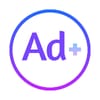Publisher Provided Signals: The Key to a More Relevant and Privacy-Safe Future of Advertising

In the wake of third-party cookie deprecation, publishers are looking for new ways to deliver relevant and engaging ads to their audiences while also respecting their privacy. Publisher Provided Signals (PPS) are a promising solution that can help publishers achieve both of these goals.
PPS allow publishers to share their first-party data with advertisers in a privacy-safe way. Publishers can map their first-party data to standardized industry segments, such as demographics, interests, and purchase intent. This allows advertisers to target their ads to specific audiences without having to rely on third-party cookies or other forms of invasive tracking.
PPS are important for advertising because they help to improve the relevance of ads. When advertisers know more about the audiences they are targeting, they can create more relevant and engaging ads. This leads to better outcomes for both advertisers and consumers.
Here are some of the key benefits of PPS for publishers:
- Increased revenue: PPS can help publishers to increase their revenue by making their inventory more attractive to advertisers. Advertisers are willing to pay more for ads that are more likely to be seen by their target audiences.
- Improved user experience: PPS can also help publishers to improve the user experience by delivering more relevant ads. When users see ads that are relevant to their interests, they are more likely to click on them and engage with the content.
- Enhanced privacy: PPS allow publishers to share their first-party data with advertisers without compromising user privacy. Publishers can hash or encrypt their data before sharing it with advertisers, making it impossible to identify individual users.
Here are some of the key benefits of PPS for advertisers:
- Improved targeting: PPS allow advertisers to target their ads to more specific audiences. This leads to better click-through rates and conversion rates.
- Reduced costs: PPS can help advertisers to reduce their costs by eliminating the need to purchase third-party data.
- Improved transparency: PPS give advertisers more transparency into the audiences they are targeting. This allows them to make better decisions about their advertising campaigns.
Overall, PPS are a valuable tool for both publishers and advertisers. They can help publishers to increase their revenue, improve the user experience, and enhance privacy. They can also help advertisers to improve their targeting, reduce their costs, and improve transparency.
Here are some tips for publishers on how to implement PPS successfully:
- Map your first-party data to standardized industry segments: This will make your data more valuable to advertisers and easier for them to use.
- Use a reputable SSP: A good SSP will help you to implement PPS correctly and protect your user privacy.
- Be transparent with your users: Let your users know that you are using PPS and how their data is being used.
- Monitor your results: Track your ad performance to see how PPS are impacting your revenue and user experience.
PPS are a key part of the future of advertising. By implementing PPS, publishers can deliver more relevant and engaging ads to their audiences while also respecting their privacy.
